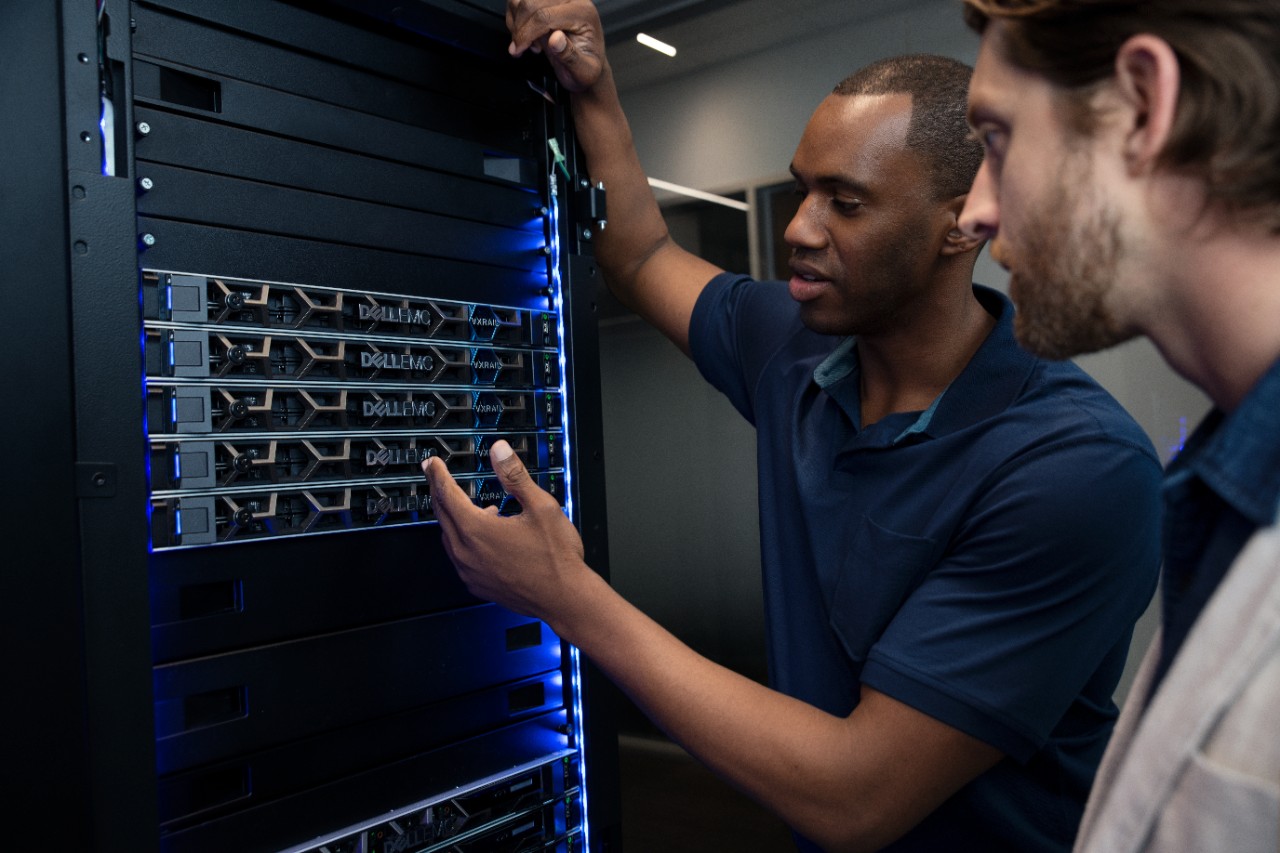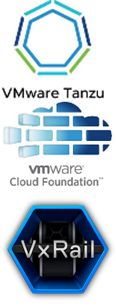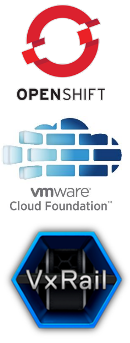

Containing The Future With Dell EMC VxRail
Wed, 24 Apr 2024 16:56:02 -0000
|Read Time: 0 minutes
Containing The Future With Dell EMC VxRail: Modern HCI Infrastructure for Running Container Orchestration Platforms
The world of containers is here, and it is driving business forward. Developers and infrastructure operators are designing, deploying, and integrating next-generation cloud native applications using a combination of containers and virtual machines (VMs), and taking advantage of the benefits that each delivers.
This evolution empowers customers to use their existing virtualization knowledge and extend it to containerized applications. Rather than develop siloed infrastructures that cater to individual workload types during this transition, many organizations are looking for a unified infrastructure platform that supports running both VMs and containers. This is where VxRail comes in.
The VxRail infrastructure is designed to run both VMs and containers. Regardless of the container orchestration platform, VxRail provides a scalable and life cycle-managed environment for consistently running containers across single or multicluster solutions. The simplicity of running container orchestration platforms on VxRail frees up organizations to focus on the business value and benefits that the solution delivers.
In recent years, a steady stream of performing validations and creating reference architectures for running containers on VxRail highlights the following:
- More customers are running container frameworks alongside—or even within—their virtualization frameworks, making for a smoother shift into the adoption of containers.
- Organizations are seeing VxRail as an ideal foundational infrastructure platform for quickly adopting containers and supporting their container orchestration runtime ecosystems of choice.
VxRail Hyperconverged Infrastructure (HCI) capabilities
VxRail Hyperconverged Infrastructure (HCI)-integrated systems help accelerate data center modernization, deploy hybrid clouds, and implement developer-ready application platforms based on Kubernetes (K8s). These tasks are possible as VxRail supports running the most demanding workloads and applications, whether VM-based or containerized while simplifying operations for IT infrastructure teams.
VxRail is the only fully integrated, preconfigured, and tested HCI system optimized for VMware. It delivers a seamless, automated operational experience with 100 percent native integration between VxRail Manager and vCenter. Intelligent life cycle management automates non-disruptive upgrades, updates, and node addition or retirement while keeping the VxRail infrastructure in a continuously validated state to ensure that workloads are always available.
These features make VxRail ideal for running container orchestration platforms, specifically those platforms that require vSphere for operation. As a result, VxRail provides customers with the flexibility to choose container orchestration platforms that are right for them. It enables them to run the container orchestration platform on a common HCI infrastructure platform that may be used with other traditional workloads.
Validating VxRail across container platform options
Dell Technologies helps customers accelerate their multicloud adoption and ensure that they have choices to select the best container orchestration platform. This flexibility has been confirmed through the development of a series of validation or reference architectures across several of the most widely adopted container orchestration platform distributions.
With VxRail, these containerized solutions deliver the same benefits on-premises or in the cloud. The following figure highlights some of these distribution options where validation work has been performed.
 Figure 1. Examples of the container platforms options with VxRail
Figure 1. Examples of the container platforms options with VxRailLet’s look at specific examples of running VxRail with some of today’s most commonly adopted orchestration platforms.
VMware Cloud Foundation with Tanzu on VxRail
VMware Tanzu enables businesses to build, run, and manage modern applications on any cloud and continuously deliver value to their customers. With VMware Tanzu, organizations can simplify multicloud operations and free up developers to move faster with easy access to the right resources. It also enables development and operations teams to work together to deliver transformative business results.
 Figure 2.2
Figure 2.2These capabilities start with the Tanzu Kubernetes Grid (TKG) runtime. With TKG, VMware uses the leading open-source technologies in the Kubernetes ecosystem to build a full Kubernetes runtime platform capable of running mission-critical customer applications.
TKG has the following open-source technologies, which VMware supports, built into its runtime platform for easy enterprise adoption:
- Cluster API for cluster life cycle management
- Harbor for container registry
- Contour for ingress
- Fluentbit for logging
- Grafana and Prometheus for monitoring
- Antrea and Calico for container networking
- Velero for backup and recovery
- Sonobuoy for conformance testing
With VMware Tanzu, businesses also have the flexibility for implementing the TKG runtime. They can do any of the following:
- Run TKG on any infrastructure, including vSphere, VMware Cloud on AWS, or native public clouds like AWS
- Run TKG in vSphere by using the TKG Service, which is bundled as a part of vSphere 7 with Tanzu and VMware Cloud Foundation (VCF) with Tanzu
- Run TKG as a service with Tanzu Mission Control (TMC)
Having touched on these TKG runtime implementation options, let’s look at the method used in our validated reference architecture: validating VMware Cloud Foundation with Tanzu on VxRail using the TKG Service. Why did we choose this method out of the three available methods? Because it delivers the type of easy deployment and operation that customers are looking for! VMware Cloud Foundation on VxRail delivers a simple and direct path to the hybrid cloud and Kubernetes at cloud-scale with one complete, automated platform.
The Reference Architecture document provides general design and deployment guidelines for running modern applications such as Confluent Kafka and Elasticsearch on VMware Cloud Foundation with Tanzu on VxRail. Find the Running Modern Applications with VMware Cloud Foundation with Tanzu on Dell EMC VxRail document here.
Amazon EKS Anywhere on VxRail
Amazon EKS Anywhere is a deployment option that enables customers to create and operate Kubernetes clusters on-premises using VMware vSphere, while allowing for connectivity and portability to AWS public cloud environments. It also provides operational consistency and tooling with AWS EKS.
Dell Technologies and Amazon recently validated Dell EMC VxRail running Amazon EKS Anywhere, in addition to the use of Dell EMC VxRail dynamic node clusters and Dell EMC PowerStore to provide the back-end storage for Amazon EKS Anywhere. (Dynamic nodes are not limited to this solution as they are features of VxRail and not specific to Amazon EKS Anywhere.)
 Amazon EKS Anywhere on VxRail
Amazon EKS Anywhere on VxRailVxRail is a strong platform choice for EKS Anywhere, which requires vSphere for production environments. EKS Anywhere running on VxRail delivers a seamless, automated operational experience for VxRail infrastructure across cloud-native and traditional workloads.
VxRail intelligent life cycle management automates non-disruptive upgrades and updates to keep its infrastructure in a continuously validated state, ensuring running workloads and optimized clusters. This automation greatly reduces risk so that customers can stay current with the multiple releases of Kubernetes and the EKS platform, which are updated using EKS Anywhere. VxRail and EKS Anywhere make it easy to standardize both IT and developer operations on-premises and in the Amazon public cloud.
EKS Anywhere is built on open-source software, using VMware vSphere to create and operate Kubernetes on-premises with automated deployment, scaling, and management of containerized applications. EKS Anywhere provides an installable software package for creating and operating on-premises Kubernetes clusters based on Amazon EKS Distro—the same Kubernetes distribution used by Amazon EKS for clusters on AWS.
By simplifying the creation and operation of on-premises Kubernetes clusters and automating cluster management, EKS Anywhere can reduce support costs and avoid the maintenance of redundant open-source and third-party tools. Using the EKS console also means viewing all Kubernetes clusters (including EKS Anywhere clusters) running through the EKS Connector (public preview).
Amazon EKS Anywhere is available by free download from AWS here. For more details, see the Running Amazon Elastic Kubernetes Service Anywhere on Dell EMC VxRail Solutions Brief here.
Red Hat OpenShift with VMware Cloud Foundation on VxRail
Red Hat OpenShift ships with Red Hat Enterprise Linux CoreOS for the Kubernetes control plane nodes. It supports both Red Hat Enterprise Linux CoreOS and Red Hat Enterprise Linux for worker nodes.
OpenShift supports the Open Container Initiative (OCI), an open governance structure for container formats and runtimes, including hundreds of fixes for defects, security, and performance issues for
 Figure 4. OpenShift with VMware Cloud Foundation on VxRail
Figure 4. OpenShift with VMware Cloud Foundation on VxRailupstream Kubernetes in each release. It is tested with dozens of technologies as a tightly integrated platform supported over a nine-year life cycle. OpenShift includes software-defined networking, validates additional common networking solutions, and validates numerous storage and third-party plug-ins for its releases.
VMware Cloud Foundation on VxRail delivers flexible, consistent, secure infrastructure and operations across private and public clouds. It is well suited to meet the demands of modern applications running on Red Hat OpenShift Container Platform in a virtualized environment and makes it easy to manage the life cycle of the hybrid cloud environment. A unified management plane is also available for all applications, including OpenShift.
VMware Cloud Foundation uses leading virtualization technologies, including vSphere, NSX-T, and vSAN. VxRail Manager and VMware Cloud Foundation Manager provide the life cycle management, and vSAN provides reliable, high-performance, and flexible storage to OpenShift. NSX-T provides the secure, high-performance virtual networking infrastructure to OpenShift, and vSphere DRS and vSphere HA deliver efficient resource usage and high availability. All of these technologies combined to create a consolidated solution of running OpenShift Container Platform with VMware Cloud Foundation on VxRail.
The Running Red Hat OpenShift Container Platform on VMware Cloud Foundation Reference Architecture document, which demonstrates the architecture of running OpenShift Container Platform with VMware Cloud Foundation on VxRail, can be found here. This document shows the configuration details, hardware resources, and software resources used in the solution validation, along with various configuration options and best practices.
Conclusion
Dell Technologies and VMware continue to see containers as a high-value technology foundation for the future of enterprise solutions. While this blog post is heavily focused on containerization, keep in mind the significant and lasting role that virtualization continues to have in modern data centers. The importance of virtualization is especially true as not every workload is suited for containerization, meaning that containers complement virtualization while setting the foundation for building on the flexibility of containerized systems and platforms on VxRail.
Additional resources
- VxRail Info Hub, which includes multiple white papers about applications running with Tanzu on VCF with VxRail
- Running Amazon Elastic Kubernetes Service Anywhere on Dell EMC VxRail – Solutions Brief
- Running Red Hat OpenShift Container Platform on VMware Cloud Foundation – Reference Architecture document
Author information
Vic Dery, Senior Principal Technical Marketing Engineer
Vic.Dery@dell.com
Related Blog Posts

Microsoft SQL Server Big Data Clusters on Tanzu Kubernetes Grid on Dell EMC VxRail
Wed, 24 Apr 2024 16:53:56 -0000
|Read Time: 0 minutes
A recently created reference architecture, running Microsoft SQL Server Big Data Clusters (BDC) on Tanzu Kubernetes Grid (TKG) on Dell EMC VxRail, demonstrates a fast and simple way to get started with big data workloads running on Kubernetes. It also shows how the containerized workloads ran using VxRail.
SQL BDC on TKG on VxRail enables simplified servicing for cloud native workloads, and is designed to scale with business needs. Administrators can implement the policies for namespaces and manage access and quota allocation for application-focused management. All of this helps build a developer ready infrastructure with enterprise-grade Kubernetes with advanced governance, reliability, and security.
This reference architecture also validated SQL BDC with Spark SQL TPC-DS benchmark optimized parameters. The test results showed that Tanzu Kubernetes Grid on VxRail provides linear scalability (for complex TPC-DS-like decision support workloads that use different query types) with predictable query response time and high throughput.
In the business value section for using SQL BDC and TKG on VxRail, based on the five measurements below. It's covered in more detail within the reference architecture.
- Simplified installation of Kubernetes
- Automated multi-cluster operations
- Integrated platform services
- Open source alignment
- Production Ready
Cross-functional teams from Dell EMC VxRail, VMware, and Microsoft have reviewed the reference architecture for content and supportability. This can provide comfort for those wanting to run on Tanzu. Some notes from Microsoft Release notes from Cumulative Update 12 (CU12) of BDC):
SQL Server Big Data Clusters is supported as a workload. Microsoft provides support for the software components on the containers installed and configured by SQL Server Big Data Clusters only. Kubernetes itself, and other containers that may influence SQL Server Big Data Clusters behavior, are not supported by the (Microsoft) support team. For Kubernetes support please contact your certified Kubernetes distribution provider.
Note: This reference architecture provides general design and deployment guidelines of running Microsoft SQL Server Big Data Clusters on VMware Tanzu™ Kubernetes Grid™ on Dell EMC VxRail. The reference architecture also applies to any compatible hardware platforms running VMware Tanzu Kubernetes Grid on vSAN™.
To wrap up, VxRail provides SQL BDC on Tanzu as a scalable and secure platform to deliver key business outcomes. This reference architecture highlights one of the first known support solutions built on Tanzu Kubernetes Grid to manage Kubernetes. The paper covers the spectrum on the build, testing, and expected performance on VxRail.
Resources:
- Running Microsoft SQL Server Big Data Clusters on VMware Tanzu Kubernetes Grid
- SQL Server Big Data Clusters platform release notes - SQL Server Big Data Clusters | Microsoft Docs It's reformulated release notes, now simpler and focused on tested configurations and documenting known issues.
- SQL Server Big Data Clusters CU12 release notes - SQL Server Big Data Clusters | Microsoft Docs For every release starting with CU12, we will provide a dedicated article containing many details about what's new, fixes, and most importantly, an extensive list of what's under the hood.
- SQL Server Big Data Clusters cumulative updates history - SQL Server Big Data Clusters | Microsoft Docs In this article, we will keep track of all previous update details.
Author: Vic Dery – Linkedin

VxRail Edge Automation Unleashed - Simplifying Satellite Node Management with Ansible
Thu, 30 Nov 2023 17:43:03 -0000
|Read Time: 0 minutes
VxRail Edge Automation Unleashed
Simplifying Satellite Node Management with Ansible
In the previous blog, Infrastructure as Code with VxRail made easier with Ansible Modules for Dell VxRail, I introduced the modules which enable the automation of VxRail operations through code-driven processes using Ansible and VxRail API. This approach not only streamlines IT infrastructure management but also aligns with Infrastructure as Code (IaC) principles, benefiting both technical experts and business leaders.
The corresponding demo is available on YouTube:
The previous blog laid the foundation for the continued journey where we explore more advanced Ansible automation techniques, with a focus on satellite node management in the VxRail ecosystem. I highly recommend checking out that blog before diving deeper into the topics discussed here - as the concepts discussed in this demo will be much easier to absorb
What are the VxRail satellite nodes?
VxRail satellite nodes are individual nodes designed specifically for deployment in edge environments and are managed through a centralized primary VxRail cluster. Satellite nodes do not leverage vSAN to provide storage resources and are an ideal solution for those workloads where the SLA and compute demands do not justify even the smallest of VxRail 2-node vSAN clusters.
Satellite nodes enable customers to achieve uniform and centralized operations within the data center and at the edge, ensuring VxRail management throughout. This includes comprehensive, automated lifecycle management for VxRail satellite nodes, while encompassing hardware and software and significantly reducing the need for manual intervention.
To learn more about satellite nodes, please check the following blogs from my colleagues:
- David’s introduction: Satellite nodes: Because sometimes even a 2-node cluster is too much
- Stephen’s update on enhancements: Enhancing Satellite Node Management at Scale
Automating VxRail satellite node operations using Ansible
You can leverage the Ansible Modules for Dell VxRail to automate various VxRail operations, including more advanced use cases, like satellite node management. It’s possible today by using the provided samples available in the official repository on GitHub.
Have a look at the following demo, which leverages the latest available version of these modules at the time of recording – 2.2.0. In the demo, I discuss and demonstrate how you can perform the following operations from Ansible:
- Collecting information about the number of satellite nodes added to the primary VxRail cluster
- Adding a new satellite node to the primary VxRail cluster
- Performing lifecycle management operations – staging the upgrade bundle and executing the upgrade on managed satellite nodes
- Removing a satellite node from the primary cluster
The examples used in the demo are slightly modified versions of the following samples from the modules' documentation on GitHub. If you’d like to replicate these in your environment, here are the links to the corresponding samples for your reference, which need slight modification:
- Retrieving system information: systeminfo.yml
- Adding a new satellite node: add_satellite_node.yml
- Performing LCM operations: upgrade_host_folder.yml (both staging and upgrading as explained in the demo)
- Removing a satellite node: remove_satellite_node.yml.
In the demo, you can also observe one of the interesting features of the Ansible Modules for Dell VxRail that is shown in action but not explained explicitly. You might be aware that some of the VxRail API functions are available in multiple versions – typically, a new version is made available when some new features are available in the VxRail HCI System Software, while the previous versions are stored to provide backward compatibility. The example is “GET /vX/system”, which is used to retrieve the number of the satellite nodes – this property was introduced in version 4. If you avoid specifying the version, the modules will automatically select the latest supported version, simplifying the end-user experience.
How can you get more hands-on experience with automating VxRail operations programmatically?
The above demo, discussing the satellite nodes management using Ansible, was configured in the VxRail API hands-on lab which is available in the Dell Technologies Demo Center. With the help of the Demo Center team, we built this lab as the self-education tool for learning VxRail API and how it can be used for automating VxRail operations using various methods – through exploring the built-in, interactive, web-based documentation, VxRail API PowerShell Modules, Ansible Modules for Dell VxRail and Postman.
The hands-on lab provides a safe VxRail API sandbox, where you can easily start experimenting by following the exercises from the lab guide or trying some other use cases on your own without any concerns about making configuration changes to the VxRail system.
The lab was refreshed for the Dell Technologies World 2023 conference to leverage VxRail HCI System Software 8.0.x and the latest version of the Ansible Modules. If you’re a Dell partner, you should have access directly, and if you’re a customer who’d like to get access – please contact your Account SE from Dell or Dell Partner. The lab is available in the catalog as: “HOL-0310-01 - Scalable Virtualization, Compute, and Storage with the VxRail REST API”.
Conclusion
In the fast-evolving landscape of IT infrastructure, the ability to automate operations efficiently is not just a convenience but a necessity. With the power of Ansible Modules for Dell VxRail, we've explored how this necessity can be met, looking at the examples of satellite nodes use case. We encourage you to embrace the full potential of VxRail automation using VxRail API and Ansible or other tools. If it is something new, you can get the experience by experimenting with the hands-on lab available in the Demo Center catalog.
Resources
- Previous blog: Infrastructure as Code with VxRail Made Easier with Ansible Modules for Dell VxRail
- The “master” blog containing a curated list of publicly-available educational resources about the VxRail API: VxRail API - Updated List of Useful Public Resources
- Ansible Modules for Dell VxRail on GitHub, which is the central code repository for the modules. It also contains complete product documentation and examples.
- Dell Technologies Demo Center, which includes VxRail API hands-on lab.
Author: Karol Boguniewicz, Senior Principal Engineering Technologist, VxRail Technical Marketing
Twitter/X: @cl0udguide
LinkedIn: https://www.linkedin.com/in/boguniewicz/


